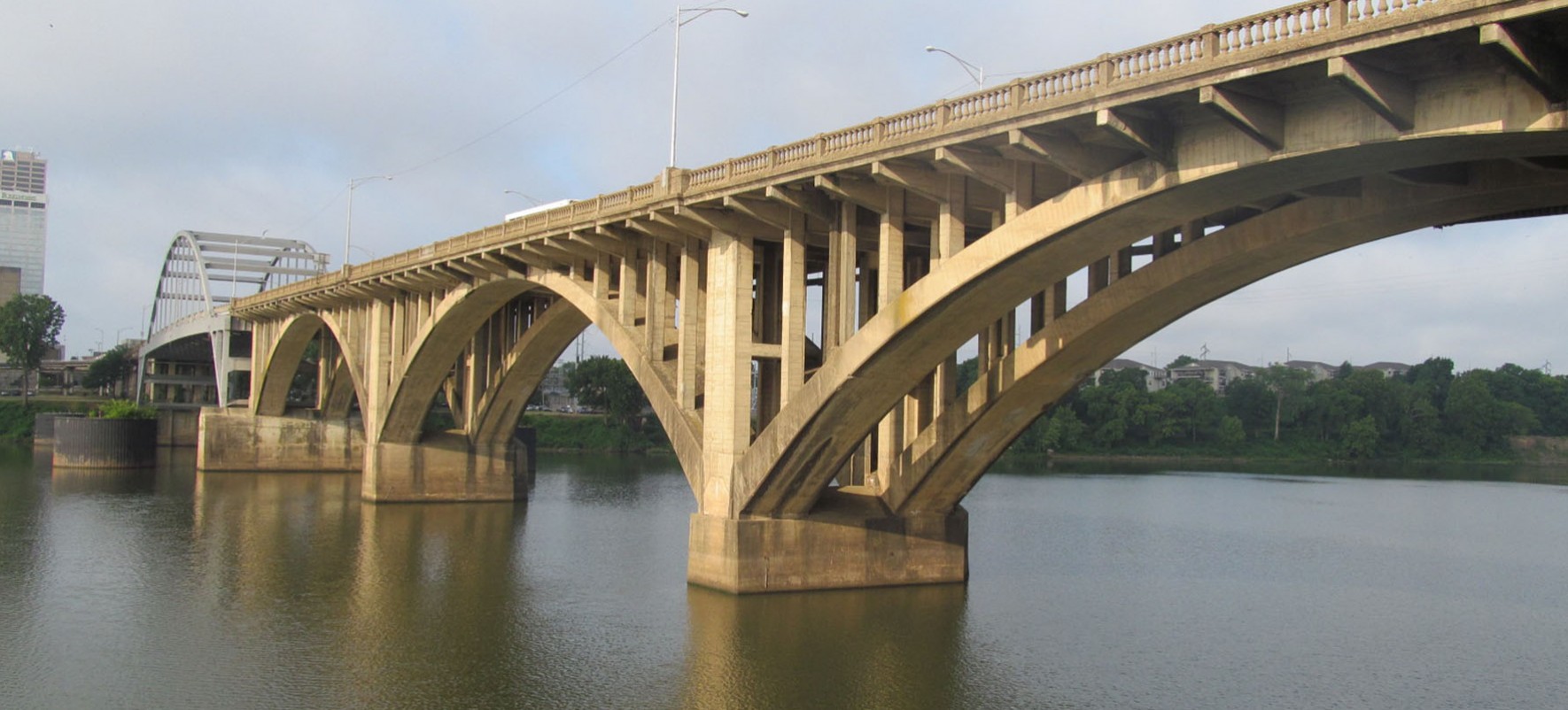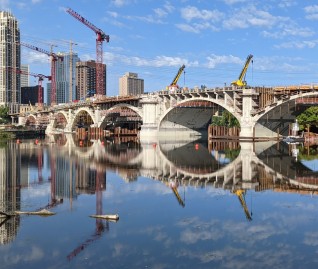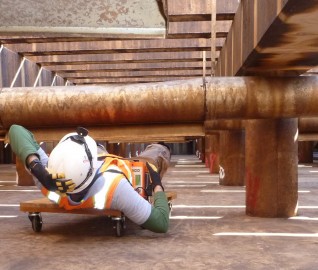WJE PROJECTS
Broadway Bridge


CLIENT |
Metroplan |
LOCATION |
Little Rock, AR |
Structure Evaluation
A limited condition assessment of the 90-year-old bridge was requested by Metroplan as part of a due diligence review of the structure. In addition to assessing the Broadway Bridge's condition, Metroplan asked WJE to examine the feasibility of repairs that would be associated with four options it had identified—ranging from a demolish-and-replace approach to scenarios in which the cities would own the bridge and might eventually fully rehabilitate or repurpose it. Cost ranges for each option were requested.
BACKGROUND
The original thirty-seven-span reinforced concrete Broadway Bridge was constructed in 1923 and spans across the Arkansas River between Little Rock and North Little Rock, Arkansas. In about 1970, the first two south river spans were replaced with a single steel tied arch span.
The Arkansas State Highway Transportation Department considers the Broadway Bridge to have reached the end of its useful life and believes that replacing it with a modern structure is a more cost-effective and reliable option than others that focus on remediating the bridge's deterioration. Represented by Metroplan, the cities of Little Rock and North Little Rock sought alternatives to this approach.
SOLUTION
In its evaluation, WJE addressed Metroplan's key fact-finding objectives relative to plans for replacing or repairing the Broadway Bridge. A number of deterioration mechanisms that impacted the bridge's condition and would continue to erode its effectiveness without near-term and ongoing intervention were found. A chief culprit was the corrosion of reinforcing steel caused by carbonation, in combination with chlorides that were apparently added during construction or have been added over time through application of deicing chemicals. This core problem and its associated distress will need to be addressed yet could be remediated depending on a number of factors to be considered by the cities.
WJE suggested repair steps that could be taken, focusing in particular on preservation and rehabilitation actions that might receive federal-aid funding. Finally, WJE provided costs ranges for each option based on the recommendations and assumptions for repair. Each of WJE's estimations provides possibilities, challenges, and costs for Metroplan and the cities to take into account in their decision-making process.
RELATED INFORMATION
-
 Our knowledge of bridge performance is supported by technical expertise in structural... MORE >Services | Bridge Engineering
Our knowledge of bridge performance is supported by technical expertise in structural... MORE >Services | Bridge Engineering -
 Our professionals deliver practical repair and rehabilitation services that maximize the... MORE >Services | Repair and Rehabilitation
Our professionals deliver practical repair and rehabilitation services that maximize the... MORE >Services | Repair and Rehabilitation -
 When the integrity or condition of a structure is in question, clients rely on us for answers MORE >Services | Structural Engineering
When the integrity or condition of a structure is in question, clients rely on us for answers MORE >Services | Structural Engineering




































